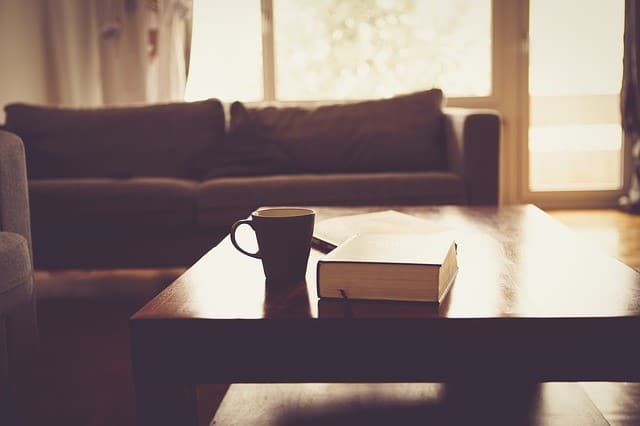
All parents have to worry about basic childproofing, but when you have a child on the autism spectrum, there are crucial additional precautions to take. Creating an autism-aware environment isn’t just a way to keep your child safe, it’s about creating an environment your child can thrive in. This guide will discuss the most important modifications to consider in your home, from the bedroom to the kitchen to the common areas. Keep in mind that all situations are unique, and some families may require more or different home updates depending on the child’s specific needs and abilities; consulting his or her pediatrician or behavioral therapist is the best way to receive specific, personalized insight into wise modifications.
The Bedroom
The most logical place to start is the room where your child spends the most time: his or her bedroom. First, consider the décor of the room. Sensory overload is a trademark symptom of autism spectrum disorder (ASD), which can make it difficult for your child to focus, relax, or even perform basic functions. The physical surroundings of his or her bedroom should be calm and soothing — the simpler, the better.
Start by selecting the right color scheme: peaceful shades of green, blue and purple are ideal. Neutral tones like brown and black are also calming. If your child seems oversensitive to color in general, a tan or beige might be the best option. Always avoid colors like red, yellow, orange and white, as these can be over-stimulating. Patterns are another no-no: even basic border designs can be too much for a child on the autism spectrum, so stick with solid colors throughout the room.
Additional decorative items in your child’s room should be limited, but they don’t have to be sacrificed completely. The less perceived clutter in the room, the better, so keep it simple: at most, one decorative item per wall. It should be placed securely and out of reach. Opt for flat frames versus shadow boxes that will protrude and could pose a hazard as the child grows. Choose an item that relates to the theme of the room — a painting of the beach on a blue wall, for instance. Natural landscapes and abstract art with soft curves and spirals tend to be the most soothing choices. If you’re buying new artwork, try to let your child be a part of the selection process; he or she will likely have an immediate reaction, positive or negative, and ultimately be the best judge of whether an item will create a soothing environment.

Keep the same color considerations in mind when it comes to furniture, and opt for wood when possible since it tends to be a more sensory-friendly material. Replace any furniture that’s made mostly of metal or glass — glass presents a constant shatter hazard, while metal can cause serious injury if tipped over. Rounded corners are another way to avoid injury, especially for particularly young children and those with mobility limitations. Keep in mind that there are simple ways to soften the corners and edges of furniture, but you’ll need to be mindful of how easily they can be removed as well as their material; pica can sometimes occur in children on the autism spectrum, so keep an eye out for signs of chewing.
Lighting is another important factor in your child’s bedroom. Natural light is the best for both mood and focus, so maximize sunlight as much as possible during the day. Since sleep issues are common for people on the autism spectrum, you’ll need to ensure that you properly shade windows to allow your child undisturbed rest: you must keep out distracting streetlights, passing headlights, and even the morning sunrise. Blackout curtains are an excellent option for direct sunlight, and other families may find a thick shade to be a better option. Pay close attention to the cord system and low-hanging curtains, as these can easily become a tripping, choking, or hanging hazard for your child. Specifically verify that there is a safety cord feature that will keep your child safe.
For additional lighting, LED light bulbs as well as certain incandescent bulbs create the most pleasant lighting for children on the autism spectrum. Fluorescent light should never be included in an autism-aware house, let alone the child’s bedroom; the way they buzz, strobe at high and varying frequencies, and distort natural colors is often overwhelming to someone with ASD. It can be so disorienting that it causes the child to seek refuge — and the goal is to make his or her bedroom the place of refuge.
A dimmer switch is an excellent way to control lighting, while a towel, shirt, or other piece of fabric placed safely over light shades can be an easy short-term brightness adjustment. If your child has limited mobility, there are hand-held light control options to meet just about any need. Be sure that other children who visit and live in the household know that dimmer switches and remotes might look like fun toys, but they should only be adjusted with care.
The organization of the room is critical, but don’t overthink it. Remember: simplicity is key. The bedroom should be organized into zones, with each zone having a single, specific function. In general, there will be three: one for sleeping, one for playing, and one for learning. The sleeping zone will include the bed (ideally against a full wall, and never against windows or doors), the play zone will include a toy chest or bin and comfortable sitting space, and the learning zone will include a desk or workspace. Keep these spaces tidy and clutter-free with labeled, non-see-through storage bins or non-topple drawers. If possible, storage should be kept in the closet or somewhere else out of sight so that it’s easy to get to without being a constant distraction.
Flooring in the bedroom is important not only for comfort, but for sound absorption. Low-pile carpet offers better soundproofing with limited impediment to mobility issues. Some kids on the autism spectrum, however, might specifically prefer a smooth surface to carpet. Wood and laminate floors offer a handsome look, but their effectiveness at reducing unwanted noise will vary depending on the material and house itself. Vinyl tends to be better with sound absorption as well as offering a softer, warmer place for kids to walk and sit on. It’s important to note that there has been minor debate over the relationship between vinyl and autism; consult with your pediatrician as needed.

Finally, don’t forget to cover your basics with safety:
- Make sure all electronics are stored appropriately — no loose cords hanging or lining the floor — and all electrical outlets are covered with childproof locks.
- Windows should have childproof locks.
- Doors should not have locks.
- Limit tripping hazards on the floor like throw rugs.
- Bedroom should include working smoke and carbon monoxide detectors; consider covering any non-emergent blinking lights with electrical tape, and be vigilant about checking the battery.
The Bathroom
Your child’s bathroom is particularly important when it comes to sound absorption — most bathrooms have noise-amplifying tile, and toilets, bathtubs, and showers are made of equally noisy materials like acrylic and porcelain. Consider letting your towel storage double as noise control throughout the room: neatly place towels on hooks, bars, and shelves wherever possible to help absorb sound. Eliminate heat and exhaust fans from the room completely; even if they seem quiet to you, they’re likely much louder for a child with ASD.
If you are able to replace the flooring and any wall or ceiling tile, it will be well-worth the investment for your child. Still, there are other ways to both reduce noise and increase safety when it comes to the bathroom floor. Adding non-slip rubber matting directly on top of the entire existing floor is a simple, relatively low-cost solution that will work in many situations — just make sure your measurements are precise to avoid any unwanted sliding or tripping. Even adding an extra bathmat (perhaps one at the bathtub, one at the sink) can help absorb excess noise. Look for ways to add some sound buffers, but as always, keep the space as simple and clutter-free as possible.

Non-slip mats are a must for the inside of the bathtub or shower, and can be helpful to include around the toilet, as well. Much of the challenge the bathroom poses to a child with sensory issues is comfort: the entire room is cold and hard. Consider adding a cushioned toilet seat or bathtub cushion, and maybe even a cool- or neutral-toned fuzzy toilet seat cover. Your child won’t always be able to leave the bathroom the moment he or she starts feeling sensory overload, so provide a few objects for positive sensory engagement where you can.
Safety railing is another important consideration to make for the bathroom, both next to the toilet and in the shower or tub. Make sure it has an easy grip small enough for your child to grab. If you’re not particularly handy, you’ll want at least the guidance of a professional before installing grab bars yourself; if they aren’t properly anchored and placed, they can be more dangerous than helpful.
Kitchen
Because children typically spend quite a bit of time in the kitchen throughout their lives, its organization is important. Do what you can to keep the space organized, and counters as free of clutter as possible. All plates and utensils (even large ones for cooking) should be kept in drawers or cabinets, and cabinets should be non-transparent. If you have glass-front cabinets, try using contact paper or some other solid décor to block the view. Even if your cabinets are pristine and orderly on the inside, seeing all of those dishes at once can be overwhelming to your child every time he or she walks into the room. The goal is to limit the stimulation he or she feels as much as possible.
Even if your child is not yet ready to help with kitchen or dining tasks, it’s important to start helping him or her build future skills. Create labels throughout the kitchen, including:
- Cabinets
- Drawers
- Appliances
- Sink
- Pantry
Some labels might simply say what’s stored there (“cups” or “bowls” on a cabinet), while others might include the name of the object as well as what’s inside (“refrigerator” and “milk”). There should also be warning labels (“HOT!” or a picture of fire on the stove) as needed. If your child has the independence to fix meals on his or her own under given rules, create an easy-to-read hardcopy posted in the kitchen at all times. Some kids might even work best from a checklist they can refer to each and every time they want to use the kitchen.
Consider storing all off-limits utensils and food in a single location that your child knows not to open — a locked cabinet or pantry, maybe. Hold the entire family accountable for keeping things tidy and make it a team effort. If other children grow weary of perceived “extra” work their sibling “creates,” talk to them about how clutter has a negative impact on the whole family; your child on the autism spectrum is just especially sensitive.
Common areas
In a perfect world, the entire house would be effortlessly kept organized and clutter-free. In the real world, there are going to be some rooms that present a bigger challenge. When it comes to common areas, focus on controlling what you can and working on solutions to major problems.

Optimize the natural light in your home as much as possible, and while supervising, consider opening up windows to let in some fresh air. Dimmers in every room are a relatively simple and low-cost adjustment, and removing a few things from the walls can make a big impact with little effort. Apply labels on closets, doors, and cabinets to guide your children where they want to go. Reduce the presence of reds, oranges, and yellows, particularly in common areas your child spends the most time in (like the living room), and when you do opt to re-decorate, stick with neutral tones and simple designs.
Use the same kinds of non-transparent storage bins and drawers in closets your child has regular access to, and have an established order to their placement. If there’s a shared coat closet, let your child have a designated “spot” for his or her jacket so he or she can always find it amid everyone else’s. Your child isn’t always going to be able to avoid overstimulation, so it’s important to help him or her keep control when it occurs: for example, he or she might feel momentarily overwhelmed if the coat closet is messy, but if his or her coat is consistently where it should be amid the chaos, it makes the situation much easier to handle.
Be mindful of the acoustics of your house, and make adjustments where you see opportunities. Simply becoming more aware of the kinds of sensory issues your child might encounter might even impact the way your family lives and operates. If you realize the noise from the living room really does carry directly into your child’s room, you might consider moving the television to another room or enforcing “quiet hours,” for instance.
Seek input from your child as much as you can when it comes to adapting his or her environment to be more autism-friendly. You might not always be able to establish exactly what he or she does want, but often knowing which items or colors not to include is equally helpful. Help your family adjust to any new organizational or rule changes, and be patient when it comes to seeing a shift. The progress may be gradual, but the end result will be well worth the effort and the wait.

 United States
United States Canada
Canada